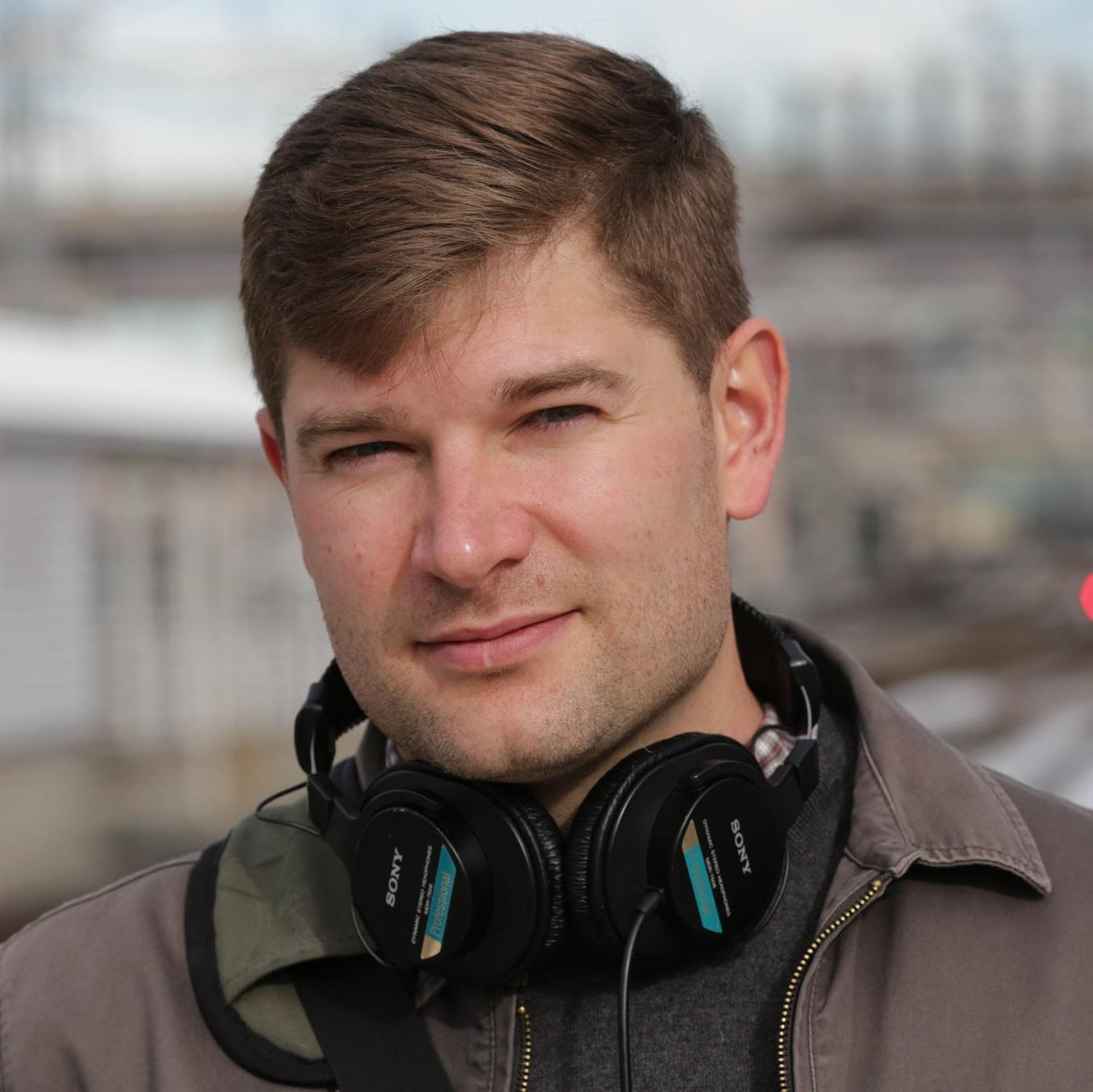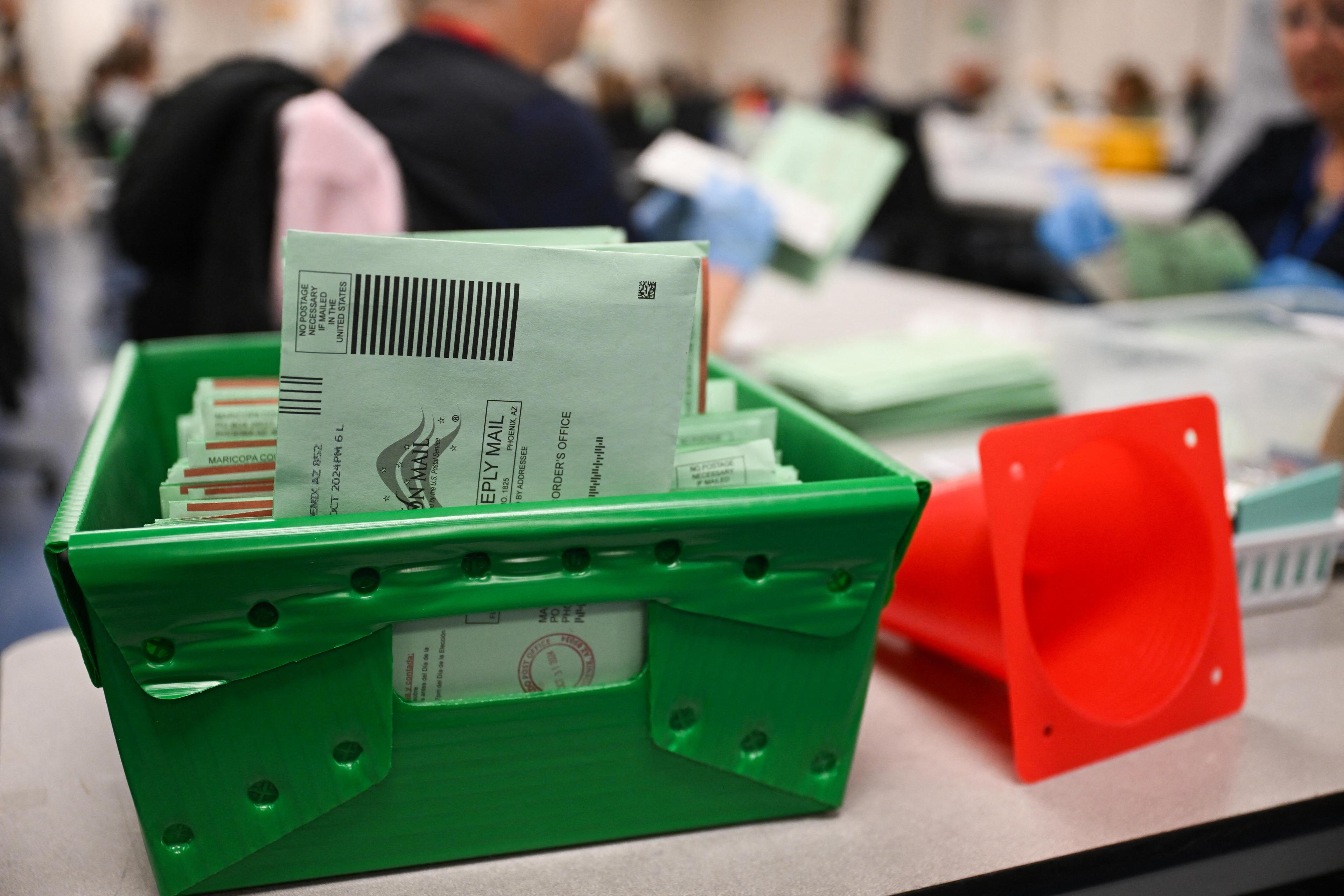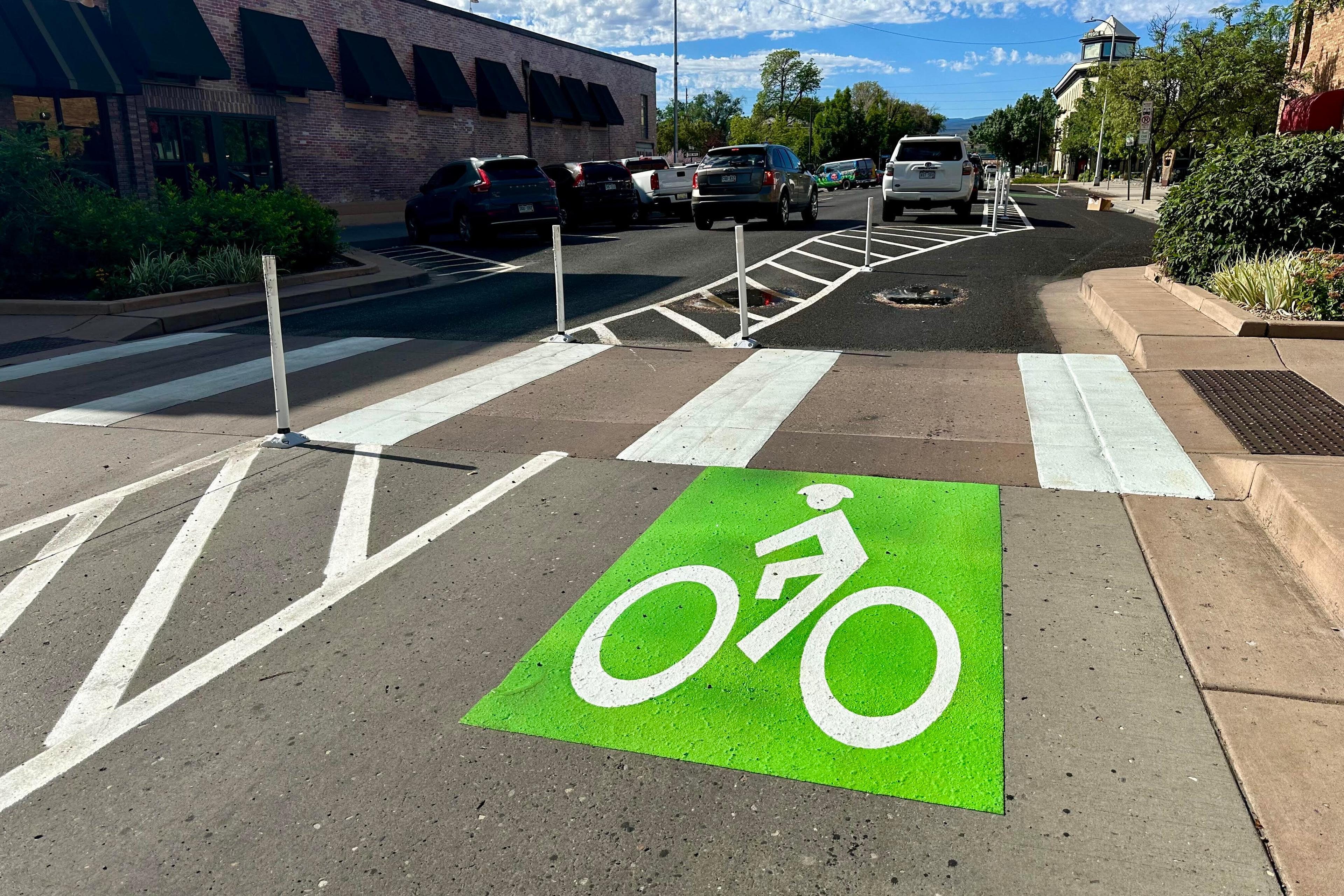
For more than 50 years, traffic tore through downtown Grand Junction on two, wide, one-way streets.
Then, this summer, the city installed white plastic posts on those streets, narrowing them to one lane in each direction and creating Grand Junction’s first-ever protected bike lanes.
Colorado’s biggest cities like Denver, Boulder, and most recently, Lakewood, have embraced plastic bollards in recent years as they repurpose street space for bicycles and scooters. Now, the Western Slope’s largest city is joining in as well.
“It feels like a watershed moment,” said Ian Thomas, president of the Grand Valley Streets Alliance.
But, the new bike lanes have set off a backlash similar to those seen on the Front Range too, with some motorists demanding they be removed. City officials say the plastic posts on Fourth and Fifth Streets are part of a long-planned push to make downtown Grand Junction a more desirable place to be – not just pass through.
“It's about reprioritizing our right-of-way for all users and not just those people that are fortunate enough to be in cars,” said Trent Prall, Grand Junction’s engineering and transportation director. “So rebalancing our infrastructure, if you will.”
Grand Junction’s Fourth and Fifth streets used to be more multimodal.
The city’s historic horsecar and electric street car systems carried passengers up sections of Fourth and Fifth streets in the late 19th and early 20th centuries. The last streetcar ran in the 1920s, and by the 1960s, as automobiles took over U.S. cities, Grand Junction leaders were making changes downtown to add more parking spaces and speed up traffic.
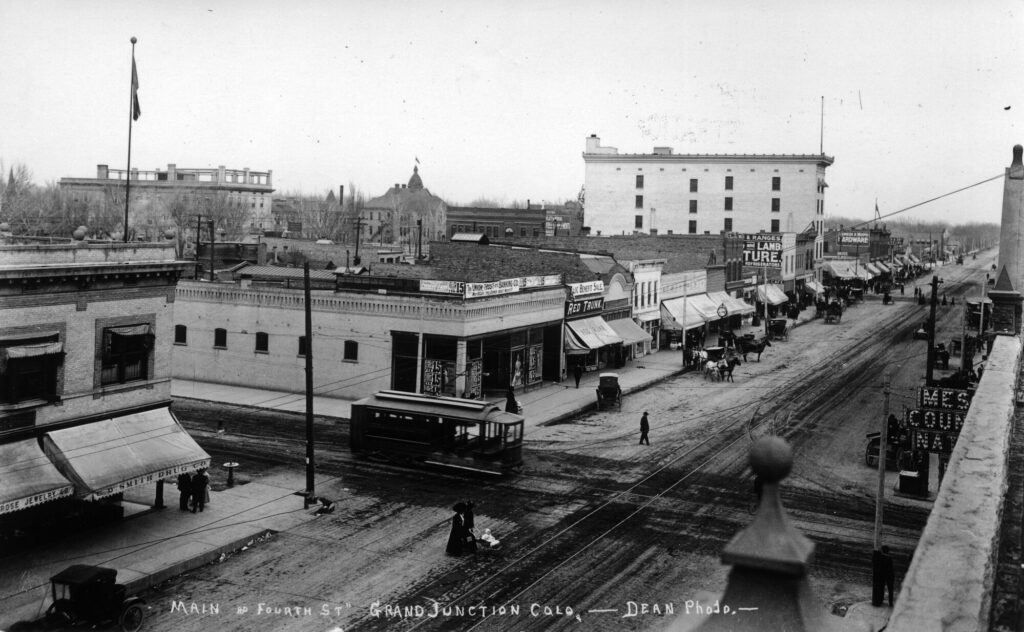

City officials said Fourth and Fifth Streets were particularly problematic. The Daily Sentinel quoted one member of the city planning commission in 1967 saying that Fifth Street downtown had “the worst traffic problem in town.” Fifth is also U.S. 50 on the southern edge of downtown and the main route into the city from the south.
Widening streets would be disruptive and costly, city officials said, so they keyed in on another solution: The conversion, in the summer of 1969, of Fourth and Fifth into wide one-way streets designed to move high volumes of cars in and out of downtown quickly.
“Whether you go by Honda, jackass, bicycle, skateboard, or as I do by pickup, take the route of the new one-way streets and keep up with progress,” Richard Martin of Grand Junction wrote in a letter to the editor of the Daily Sentinel in August 1969.
But it wasn’t long before authorities questioned the wisdom of that progress. In 1981, the city’s Downtown Development Authority called out the two high-speed roads as a concern, Prall said. They were finally narrowed from three lanes to two in the late 2000s, he added, but traffic, especially on Fifth, still regularly moved well over the posted speed limit of 25 – sometimes well over.
“It’s the extremes that are the most disconcerting,” Prall said. “It's those that were 10, 15, 20 miles an hour over (the speed limit) and felt comfortable enough to do that.”
So the city and downtown interests finally settled on the overhaul that went into the ground this summer. Now, the streets are still one-ways but have been whittled down to just a single lane. Parking is preserved on both sides of the street, and there is a separate lane for bicycles.
A consultant’s analysis said that the one-lane configuration could handle traffic volumes both today and decades from now, Prall said.
The plastic post-treatment is meant to be temporary, Prall said, and the city hopes to build out its final version with permanent concrete structures and more greenery in a few years.
“That’s the dream,” Prall said.
The new layout, in the meantime, has a lot of residents worked up.
Nancy Bennett, a Grand Junction native, first noticed the changes last week when driving through downtown on Fourth Street and immediately felt uncomfortable: The lane felt too narrow and traffic only crawled along.
Bennett and other residents have taken to social media to complain and push city leaders to roll back the changes; Prall said the city isn’t planning any major changes for at least a few months.
“If they're going to keep it, I'll just avoid the area,” Bennett said. “I won't participate anymore in the downtown stuff, or I'll take a different route to get downtown because I really do feel like it's going to be a hazard.”
Bennet said she associates bike infrastructure with bigger cities and she does not like that it has come to her hometown.
“We are not Denver,” she said. “That's the other thing. I'm sick of everybody saying, ‘Oh, well, California does this. Denver does this.’ We're not those towns.”
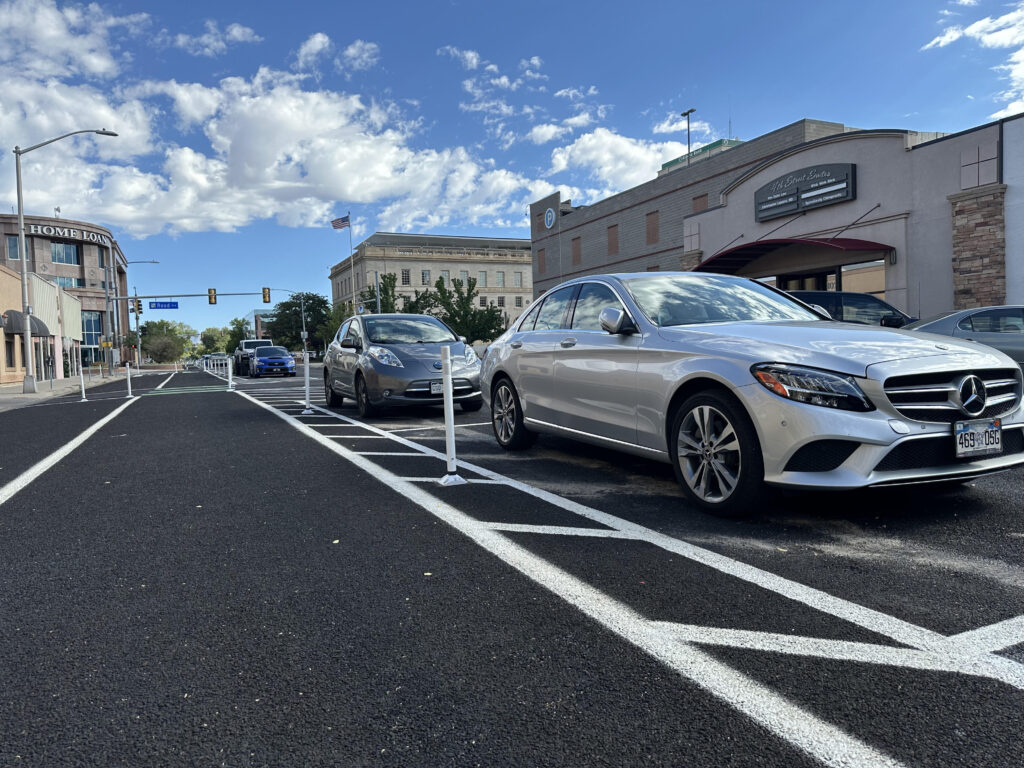

But like Denver, Grand Junction now has its own established goals around improving safety for pedestrians and cyclists – and better infrastructure is a big part of that.
Census data shows that more than 70 percent of Grand Junction residents drive alone to work. But Ian Thomas with the Grand Valley Streets Alliance said the bike and pedestrian scene has been “picking up a lot of steam” in recent years.
“Grand Junction has really good bones,” Thomas said. “It's fairly dense, it's flat, and we have good weather. So obviously it makes for a fantastic location for a bike and pedestrian paradise.”
At least one local cyclist said he’s excited to put the new lanes to use. Larry Lyon said he prefers to leave his pickup truck in the driveway as much as possible in favor of his electric bicycle.
“It's just cheaper for one and it's good exercise. I'm 69 years old so I like to try to get as much exercise as I can,” he said.
Lyon said he’s been hit four times by drivers in the last two years, so he was thrilled that the new bike lanes on Fourth and Fifth are separated from traffic.
“Of course, the cars were upset about it,” he said. “But I really liked it. I wish all the bike lanes were like that.”
